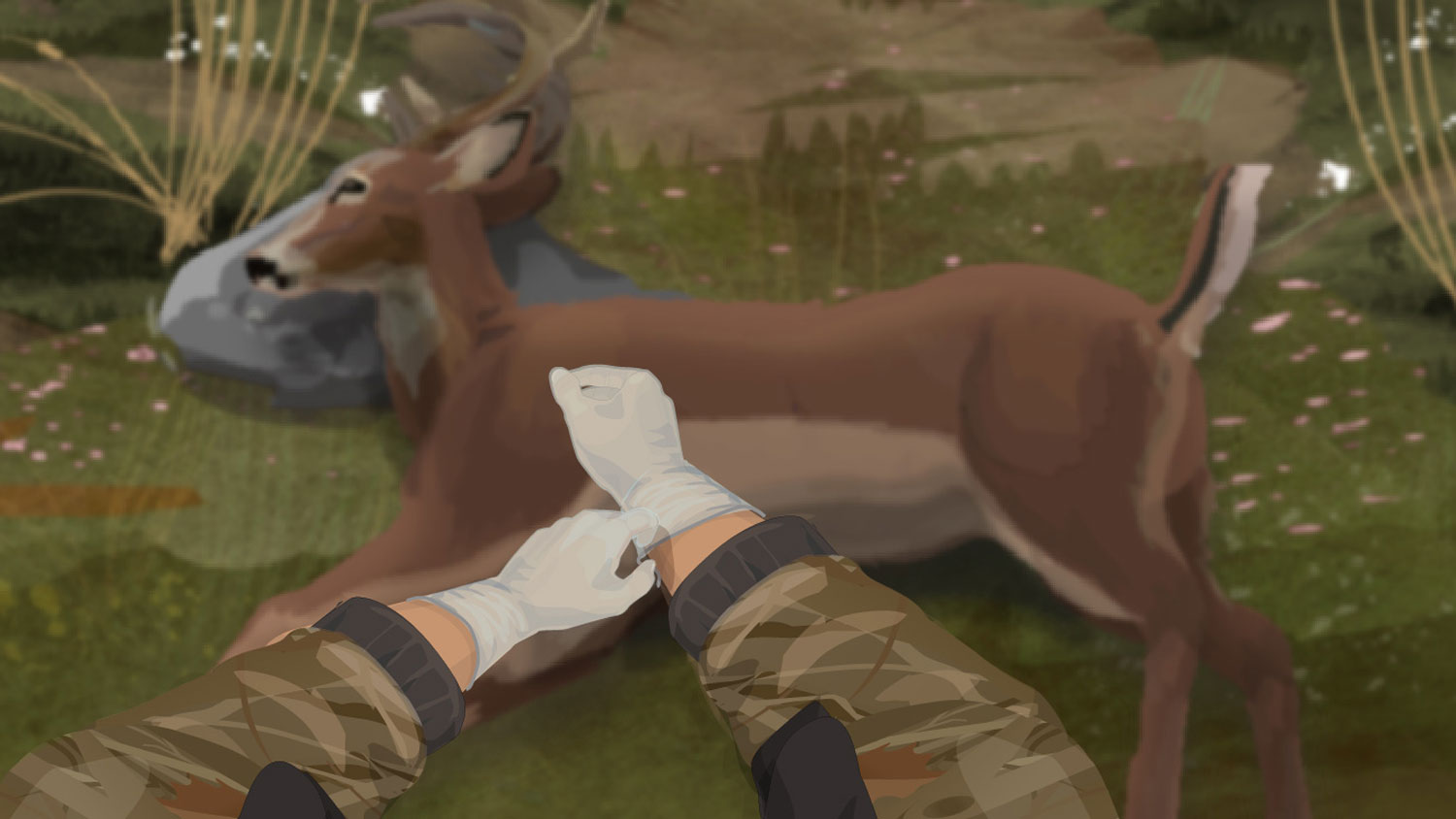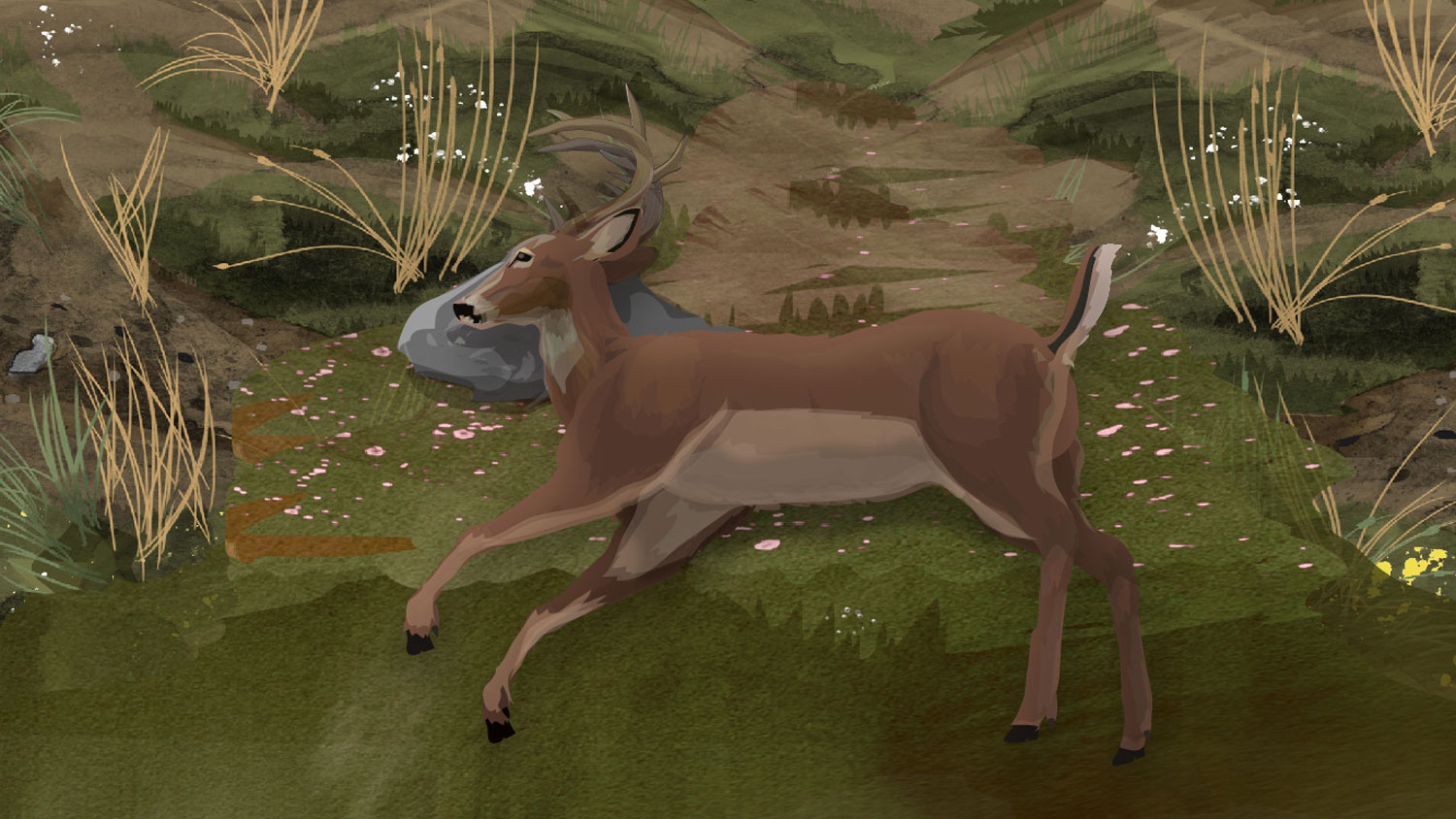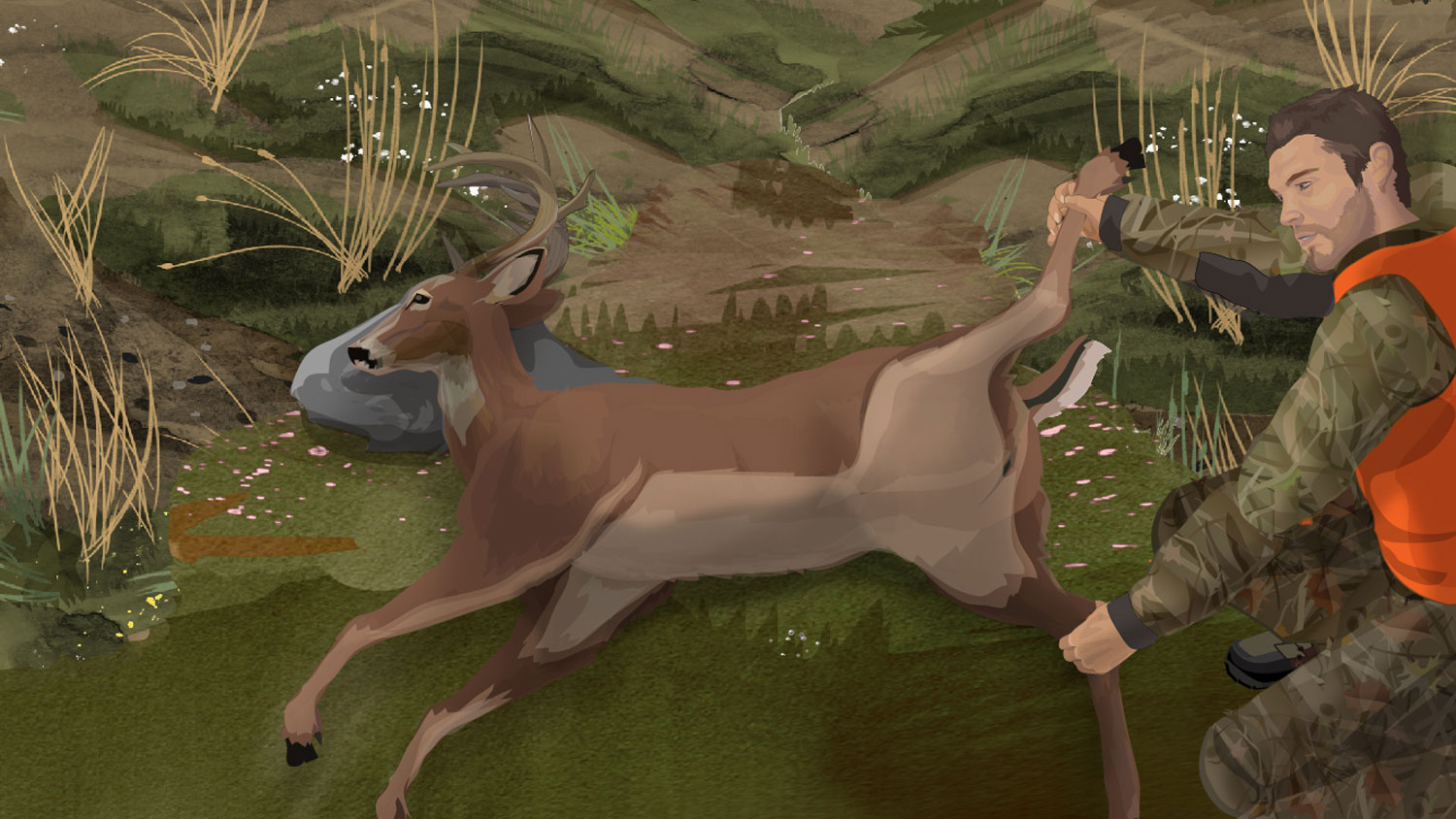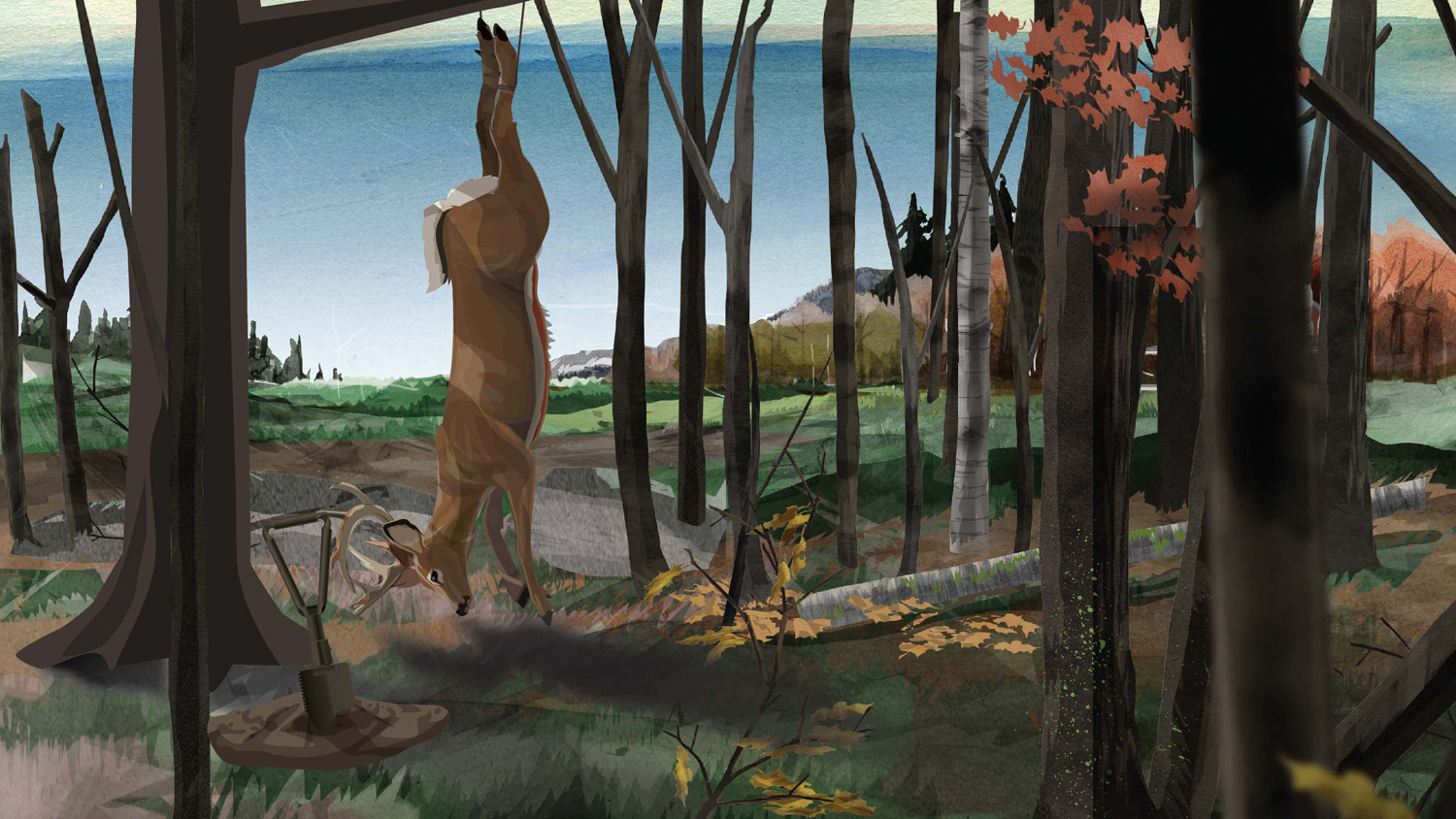HUNTINGsmart! USA Knowledge Base
Module 13 - YOUR CONTRACT TO KILL
HOW TO GUT A DEER
Before you start rooting around in the belly of a buck, raise your victory flag by tying some fluorescent tape to nearby tree branches. This will mark your location so that if other hunters see the carcass moving but can’t see you, they’ll notice the orange marker and know the prize is being claimed. Want to know the fast and simple way to gut a deer? Follow these steps:

STEP 1: Keep it clean. If the deer is laying in muck, move it to a dry place. Keep yourself clean too. Good plastic gloves will help keep your hands from contaminating the meat and the stink from getting on your hands. That’s your official head’s up—there’s a scent.

STEP 2: Roll the animal onto its back or side and try to position the head so it's placed higher than the rump. Gravity will help it bleed out cleanly.

STEP 3: Expose the belly and crotch. If you’re with a buddy, have them hold the legs back for you. Plan ahead—do you want to turn the head into a mount? Make sure you don’t damage the cape when cutting.

STEP 4: Get your knife out and make sure it’s SHARP. Do your cutting with the sharp edge of the blade facing up to prevent piercing the intestines or dragging hair into the stomach cavity.

STEP 5: Gloves on. Cut the belly open from the sternum to the crotch or from crotch to sternum. Most hunters prefer to cut down towards the crotch, with the direction of hair growth (this can make for a smoother cut). While making the cut, use your free hand to push down on the organs to prevent an accidental puncture. Don’t be shy—get in there.

STEP 6: Grab your buck by the testicles or your doe by the udder. Cut around the entire crotch zone, and then cut a line straight down from the crotch to the anus. Your goal here is to remove the whole package from the abdominal wall so that the only piece still attached to the carcass is the urethra.

STEP 7: Tug down on the urethra and carefully cut around it. You want to free it just above the anus, not sever it in the middle.

STEP 8: Cut the skin all around the anus (put the blade in deep—we need to make sure it’s loose). For a doe, go wide to get around both the anus and the vagina.

STEP 9: You need to be careful here because once you free the colon from the pelvic canal, you may have a feces spill to deal with in the stomach cavity. If this happens, clean up the mess by using the deer’s darkest blood as a rinse. Don’t use water because it will just spread the contamination around and the moisture will damage the quality of the meat. You can prevent this problem by first clamping off the colon with a tightly tied string.

STEP 10: Reach into the chest, find the diaphragm and cut it out. The diaphragm is a curtain of connecting tissue that separates the heart and lungs from the stomach cavity. Its removal opens the floodgates so it’s always the first to go.

STEP 11: Reach into the chest cavity (up to your elbow) and grab the windpipe with your free hand. With your other hand, carefully slip your knife up there and cut the windpipe free. Blind cutting is when accidents happen. Make sure all your fingers make the return trip.

STEP 12: With the windpipe cut free, you can pull out all the hot stuff inside. Pull down on the windpipe with your free hand and use your knife-hand to cut any clinging organ tissue away from the backbone. Then sweep out the loose guts with your hands.

STEP 13: Prop the gutted carcass open with a clean stick to allow it to cool down before being transported. Be mindful of the air temperature as well as the temperature of the meat. The meat will begin to spoil when it reaches temps of 40°-140° Fahrenheit (the danger zone).

STEP 14: Make sure the leftover guts aren’t in a location where someone’s dog might find them and drag them home to play with.
Check This Out: Use Your Rope
If you‘re leaving the carcass or quarters in the hunting area to retrieve by ATV or at a later time, use your rope and a fairly high tree branch to raise the meat up off the ground. Fresh meat left on the ground won’t cool properly because it can’t receive proper air circulation. Hanging the meat will also help keep foraging animals from getting at it. Don’t leave it too long though or the meat will spoil.



